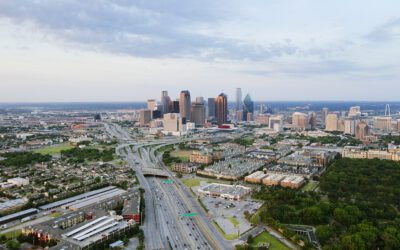The mass adoption of remote and hybrid work since 2020 has led to weak demand for commercial office space, but not only in urban cores and central business districts (CBD). Office buildings in suburban areas and halo cities are reporting alarming vacancy rates, which could lead to loan defaults, foreclosures, and eroding property values. And from a commercial real estate perspective, market demand for these properties in their current designated use state is not expected to increase. Obviously, this is a problem financially for both owners and operators as well as the cities where these buildings are located.
So, how did we get here, and why are there so many properties that are underperforming?
While the majority of midsize and grocery-anchored strip-mall retail has rebounded since the pandemic – 5,000 square-foot spaces are now at 96% leased – the commercial office category will not reflect that same level of rebound.
In a Dallas Morning News article, Steve Brown notes that more than 70 million square feet of office space is vacant in Dallas-Fort Worth, including sublease space – the largest amount of vacancies in decades. Only 33% of direct space on the market is in blocks over 100,000 square feet, demonstrating how many large companies have shed space since the pandemic in light of remote and hybrid work. This means the majority of vacant office space is in small and midsize buildings, many located outside the CBD.
We’re looking at suburban commercial office properties that are 50,000-250,000 square feet with 50% vacancy. These 2-3 story buildings with a dozen acres of surface park were built decades ago on the suburban edges of density to attract and establish new companies in the area. Dotting the suburbs with these 200,000 square-foot office buildings gave companies space to office in areas convenient to schools, homes, and areas people wanted to live. Now those cities have grown and expanded far beyond these building locations, such as Richardson, Plano, South Dallas, Garland, Carrollton, and more.
In the 1980s, there was a cavalier building boom in the suburbs and developers were willing to throw anything up and see if it worked in attracting businesses and people. These young suburban areas with new office buildings close to schools, amenities, and single-family housing were attractive to companies relocating to the area. They could more easily attract the labor force that was there at that time.
But now there’s little reason to return to these older inefficient buildings, especially as many companies that formerly occupied these spaces have decided to save money by going fully remote. What type of company wants to repurpose the building when so much work likely needs to go into it?
Cities are beginning to look at ways to convert these vacant and mostly vacant buildings, increase occupancy, and improve efficiency. If there is no demand for office space in these areas, what building types ARE in demand? One large office space at Legacy Drive in Plano, the former Electronic Data Systems headquarters, is planned for a conversion into a life science and medical research center.
Taking a closer look at properties that are underperforming, we can build off of the quality things that exist around it to regenerate the area. By removing excess office space and replacing it with mixed-use, we’re helping cities to reinvest in communities by supplying the property types most in demand, like housing and small retail.
From a broker’s perspective, in evaluating these vacant properties, they’re not as desirable for the same purpose anymore. In fact, certain cities and properties are in dire need of revitalization because the area itself is desirable or up and coming. It’s a great spot, affordable and convenient for Millennials who really love the quality of life they find there.




